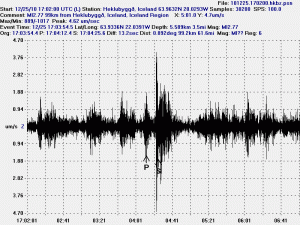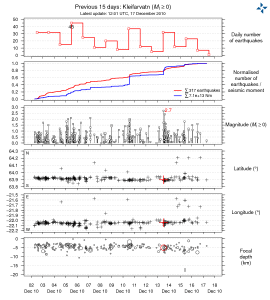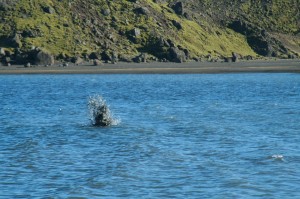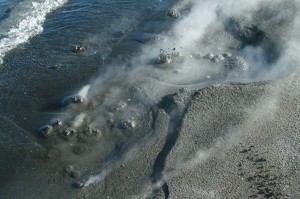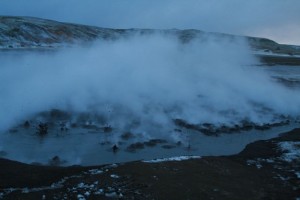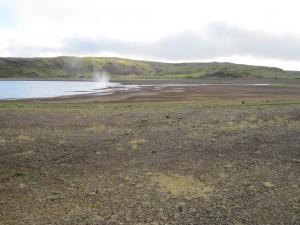Here is the last activity update before Christmas starts. As I did expect a deep earthquakes have started again under Eyjafjallajökull volcano. So far the main depth is about 10 to 15 km. So far nothing indicates a immanent eruption in Eyjafjallajökull volcano. But it is wise to keep watch on the deep earthquakes that have started to re-appear under Eyjafjallajökull volcano.
But Eyjafjallajökull volcano is not the only volcano making earthquakes. There are also earthquakes taking place in Grímsfjall volcano and in Esjufjöll volcano. The continues earthquake swarm in Krísuvík volcano. But this is the same that has been going on in previous weeks in that area.
There has also been some minor earthquake activity in Grímsfjall volcano. A signal that Grímsfjall volcano is getting ready for a eruption in the year 2011 maybe.
Non-volcanic earthquakes
There has been a lot of earthquakes in the Tjörnes Fracture Zone (TFZ). But the largest earthquakes in the last 24 hours did get the size ML3,0 according to the automatic SIL system that Icelandic Met Office runs. The size might be subject to a review later on.
But other then this it has been quiet in Iceland earthquake wise and volcano wise. But when the most frost was going on over Iceland there was a lot frost earthquakes taking place. But those events are false earthquakes and are due the fact that freezing water appears to crack the ground, sometimes with considerable force. The frost needed for this to happen has to be below -10C far as I understand.
Christmas stuff
I am going to take my Christmas break from 12:00 UTC on the 24th of December (2010) until the 27th of December (2010). While this break is on comments might be held longer in the moderation queue then normally. If anything major happens, I am going to post information about it when I can in this time. But unlike us humans nature doesn’t care about our days off. But I am hoping for a quiet Christmas in Iceland like everywhere else.
There is going to be special Christmas blog post tomorrow for all those Christmas greetings.

